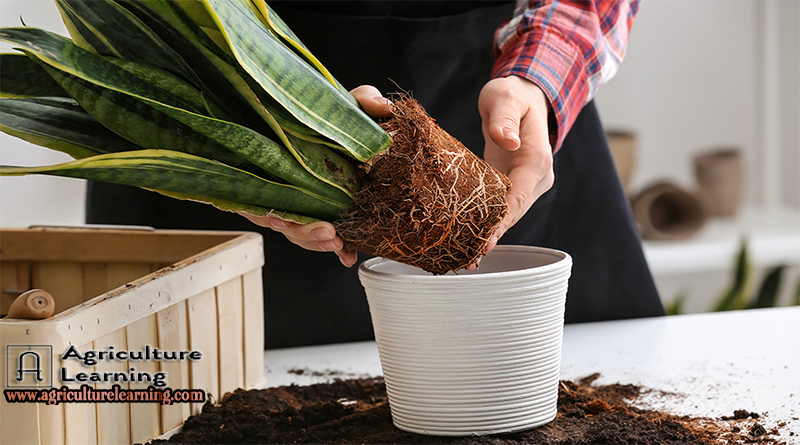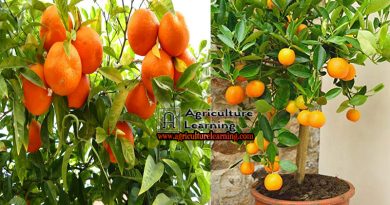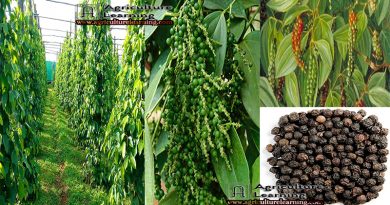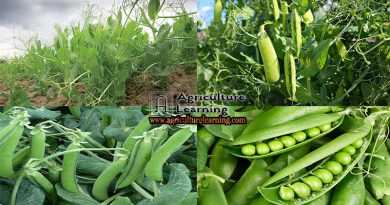Snake Plant Leaves Turning Brown and Soft (7 Causes and Solutions)
Snake plant (Dracaena trifasciata) is one of the best houseplants for improving indoor air quality. They aren’t difficult to care for, but these succulents have some special requirements. Your snake plants may become brown and soft if they are not fulfilling these conditions.
Excess watering issues are the most common causes of snake plant leaves turning brown and soft. Extreme sunlight, pests, low humidity, nutrient deficiencies, and fungal infections can all cause of leaf browning. If you notice this happening to your snake plant, adjust growing condition to get your plant healthy again.
Overwatering:
Snake plants are expert at storing water and making it last for a long time due to their succulent nature. So, they don’t respond well to being overwatered. Leaf discoloration is always the first sign of an overwatered snake plant. They first begin drooping before a blister form on the surface of the leaves. The bloated leaves look brown as they lack certain nutrients.
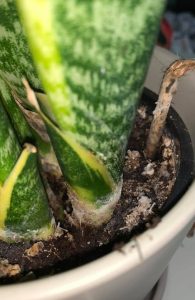
Sometimes, the potting mix can be a problem. When the soil becomes dense like mud, it can become too wet or concrete dry, then suffocate the roots making the plant unhealthy. If you don’t deal with the problem immediately, the leaves will fall off, and your snake plant will die.
Look for the following main signs of overwatering:
- Yellowing of the leaves
- Despite watering, the leaves are drooping and wilting.
- Growth has been slowed.
- Your snake plant’s base is rotting.
- Brown or black mushy roots indicate root rot.
- Another sign of root decay is a foul odor from the soil.
- Soggy soil that has been left wet for too long.
Solution:
You need to take initiative quickly, especially if the leaves begin to yellow and droop. If you detect a problem early on, you will likely save your plant.
Here the important steps you need to take:
- Repot your snake plant gently.
- Check the roots for any signs of root rot. The roots that have been affected will be black or brown, fragile, and mushy. The rotten ones will feel slimy and smell bad.
- Gently cut off any affected roots from plant using a sharp, sterile pair of pruning scissors. After each cut, clean it with rubbing alcohol or a bleach solution.
- Remove any leaves that have soft brown spots. You don’t have to make any concessions here because fungal or bacterial leaf spots will eventually spread to other areas.
- Brush away as much old soil as possible from the remaining roots. This will aid in the removal of any persisting rot-causing agents.
- Treat the healthy roots by soaking them in a suitable fungicide. You can also make your drench by combining a tablespoon of regular hydrogen peroxide and a cup of distilled water.
- Transfer the plant in a new pot and make sure the new pot has plenty of drainage holes.
- Provide your snake plant with moderate humidity, temperature, water, and light conditions. Avoid any situations that will put your plant under stress.
Underwatering:
Snake plants are extremely drought resistant. After the last drink, there will be no signs of distress for weeks, if not months. If you notice browned and crunchy leaves at the tips and margins, your plant has been neglected for far too long. The main signs of an underwatered snake plant are a lack of growth, brown leaf edges, curling leaves and bone-dry soil. The leaves may appear shrunken, wrinkled, or shriveled as well.
Solution:
Water on your snake plants when it will dry. Water it thoroughly until the liquid flows out of the drainage holes. That should be enough to keep your snake plant alive and well.
Allow the excess water to drain before emptying the drip tray. Water your snake plant only when the soil feels dry to the touch.
If your plant requires frequent watering, you should investigate other possible causes. Check the amount of light, humidity, and temperature to see if these are the culprits.
Fungal Diseases:

Snake plant could get brown spots on its leaves from fungi like:
- Snake plant red leaf spot disease– Causes the appearance of red to reddish-brown spots and irregular patches.
- Snake plant rust– Indicated by tiny, pale yellow spots on foliage that expand before turning brown. Affected leaves may fall off.
- Anthracnose disease– First appears as small oval to round, dark green watery lesions. They later become circular, light brown spots. These spots will eventually merge into large brown patches.
- Snake plant southern blight– Caused by the fungus Sclerotium rolfsii, southern blight is indicated by white areas that turn deep brown over time. The leaves will soften and wilt, appearing soggy or wet.
How to fix fungal diseases
Fungal diseases usually affect an overwatered snake plant. You can try to plucking diseased leaves and reduce watering. The solution might be replacing your plant or propagating new from healthy leaf cuttings.
If the fungal infection is mild, consider spraying with an appropriate fungicide and follow the manufacturer’s instructions.
Prevention against fungal diseases is your best bet:
- Avoid overwatering your snake plant.
- Keep the leaves from getting wet.
- Avoid watering from above. Instead, water the plant from the bottom up and into the growing medium.
- Water your snake plant in the early morning.
Pest Infestations
Snake plants are vulnerable to many insects, which can cause brown spots on their leaves and other damage. Scale insects and mealybugs are particularly fond of these succulents.
Spider mites, fungus gnats, and whiteflies can attack and harm your snake plant, as can aphids. Their damage can hurt your plant’s health and growth.
If you don’t take any steps, pest infestations will cause the leaves to turn yellow and brown.
How to Fix
Using a pair of sterile, sharp scissors or shears, remove any severely diseased, damaged, or affected leaves.
Once you’ve done that, you can figure out what pest is bothering your snake plant and treat it accordingly:
- Whiteflies and mealybugs are best removed with a steady stream of water. Do it outside, and then bring your snake plant inside to dry.
- Fungus gnats are usually caused by excessively wet soil. Allowing the soil to dry out should help eliminate the gnats and keep them from spreading. Avoiding overwatering is a sure way to keep fungus gnats at bay.
- Spider mites require the quickest reaction time. They can cause irreversible damage to the growth of your plant. Use a commercial miticide to spray your plant once a week.
- Using an alcohol-soaked cotton swab, remove mealybugs and scale insects.
- To eliminate any remaining pests, use neem oil or insecticidal soap.
Low Humidity

Snake plants are succulents, so they don’t like places that are too humid. But they feel at home in average humidity levels, especially when they are well-hydrated. In addition, very low humidity can stress your plant and make more of its leaves turn brown. Winter can be tough on indoor snake plants because central heating removes moisture from the air. Low humidity also speeds up moisture loss from the soil and the leaves because they breathe more. This can worsen a snake plant damaged by too much water, sun, or heat.
How to Fix
Place a shallow water tray with wet pebbles near your potted snake plant for the easiest way to improve humidity level. During winter, a small humidifier will suffice for the hardy snake plant. Keeping your plant away from heating vents and drafty areas is also essential.
Are your Snake Plant Leaves Turning Brown Due to Excess Fertilizer?
Snake plants don’t require a lot of fertilizer because they aren’t heavy feeders. So, in the growing season, half the recommended dose of all-purpose fertilizer, reconstituted monthly, should be sufficient. In the off-season, excessive fertilization or feeding can lead to a buildup of chemical salts in the soil. Browning of the leaves above the ground signifies that too much fertilizer salts are causing damage to the roots.

Solution:
Flush the Potting Mix:
- First, place your snake plant in a pot outside or the sink.
- Deeply flush the soil by soaking it in distilled water for several minutes. This will aid in the removal of some of the fertilizer salts.
- Allow the excess water to drain completely from the pot.
- Clean out the drip tray or cachepot.
- Don’t water again until the soil is arid.
Don’t give your snake plant too much fertilizer to keep it from dying. Instead, you should stop fertilizing during the fall and winter.
Too Much Direct Sunlight

Snake plants thrive in light that is both indirect and bright. Therefore, they can withstand a few hours of direct sunlight daily, especially in the late afternoon or early morning. However, if your plant is subjected to too much direct sun, the leaves will begin to turn brown as a result of the drying and burning effects of the sun.
Solution
Relocate your potted snake plants to a location where they will receive adequate amounts of direct but consistent bright light (4-5 hours per day).
Nutrient Deficiencies
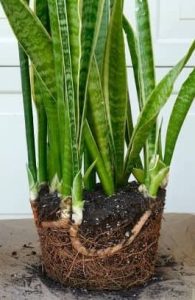
A lack of nutrients can have just as devastating an effect on your plant’s development and health as too much fertilizer. Although under-fertilization can cause brown leaves indirectly, nutrient deficiency symptoms are typically weak, yellowing leaves before the leaves finally turn brown. This is especially true if your snake plant isn’t getting enough light or is lacking essential nutrients like nitrogen.
Solution
If you suspect your snake plant has a nutrient deficiency and needs a boost, don’t forget that a bit of fertilizer can go a long way. Don’t overfertilize your snake plant to minimize the risk of browning the leaves through fertilizer burn. I think you should repot your snake plant in case the soil is deficient in more than one nutrient.
106 total views, 1 views today

